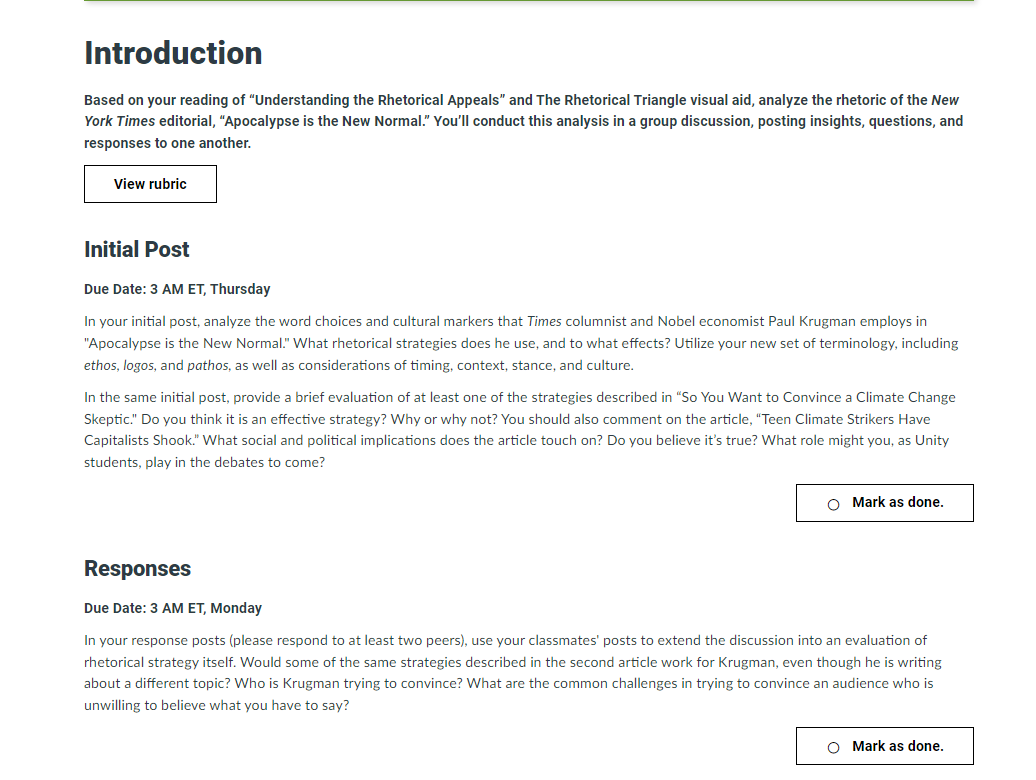Assignments and Discussions
Along with the Course Project, coursework for students includes assignments and discussions. These can be actual components of the Course Project or separate types of assessments to gauge skill development and progress towards learning outcomes. Their goal is to explain a concept, not to teach or give instructions.
Discussion
Nearly all discussions in Unity DE classes rely on a similar format of initial posts and response posts. The two separate interactions are meant to transform in-person discussions for an asynchronous, digital medium. First, students post initial thoughts, reactions, reflections, or findings. Next, peers respond--critiquing, expanding, supporting, evaluating, etc.--to original posts and students in turn offer the same feedback on other peers’ posts. This exchange promotes deeper engagement with the learning material and brings students higher up in Bloom’s Taxonomy. However, discussion prompts must be carefully crafted so as to create topics that leave room for agreement/disagreement, multiple perspectives, alternative approaches, and nuance. Restating content knowledge or close-ended questions do not promote meaningful, engaging discussion.

Assignments
Assignments offer greater variation in purpose, format, processes, and products. Students should still be applying content knowledge in a way that offers opportunity for skill development and aligns with course outcomes. The backwards design model again centers these course outcomes and calls for activities that can demonstrate measurable progress towards meeting them. Assignments should also offer potential real world application, authenticity in task or product, and meaningful engagement. Clear purpose and outcome eliminate the need for “busy work” or lower order activities.

Rationale
While it may seem formulaic or repetitive to largely standardize discussions and assignments, this model allows students to focus on mastery of material and skill development as opposed to allocating time simply to determine what an assignment is looking for or how to do it. Students do not have to “learn how to learn” and can instead apply known successful methods to a variety of subject matter. Systematizing the learning process for students promotes efficiency and allows for greater depth in the shorter term length.